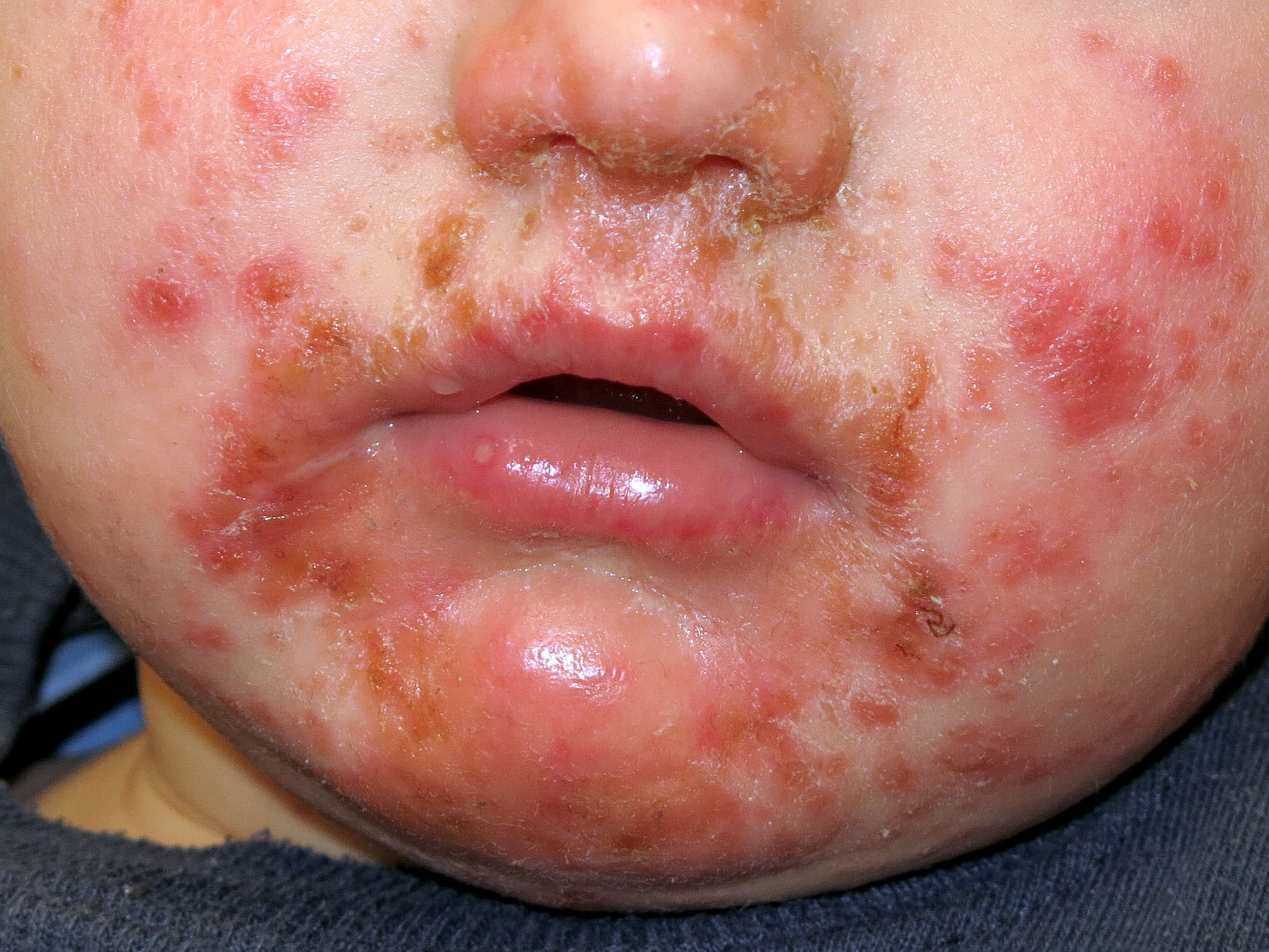

What is impetigo?
Impetigo is a very common skin infection that causes sores and blisters. It affects mainly children. It’s sometimes called ‘school sores’.
Impetigo is contagious and can be very dangerous for newborn babies. It’s important to keep children who have impetigo away from babies and they should not go to school or childcare until treatment has started.
What are the symptoms of impetigo?
Impetigo causes sores on the skin. These can be in the form of blisters that grow quickly, then burst and leave a moist area with a brown crust at the edge. The blisters can be large (several centimetres across) and quite itchy. Sometimes the sores have a thick, soft, yellow crust with a moist red area underneath.
Sometimes small blisters join together to form large, loose, floppy blisters. This is called bullous impetigo.
The sores appear 1 to 3 days after exposure to the infection. They are contagious as long as there is fluid weeping from them. They are no longer contagious when they have scabbed over or 24 hours after starting antibiotic treatment.
Other symptoms may include a fever, swollen lymph nodes or feeling unwell.
What causes impetigo?
Impetigo is caused by the Staphylococcus or Streptococcus bacteria. The bacteria can get into the skin if it is scratched or broken from atopic dermatitis (eczema), scabies, insect bites or head lice.
Impetigo usually affects young children because the infection can easily be spread in environments like schools and childcare centres. Impetigo in adults can happen when people are living in a confined environment, such as army barracks, or when someone’s immune system is not working properly.
When should I see a doctor?
Speak to your doctor if you or your child has symptoms of impetigo. Impetigo is not usually serious, but it can sometimes be confused with other skin conditions such as cellulitis, contact dermatitis and insect bites. Your doctor may want to rule these out.
How is impetigo diagnosed?
If you think you or child may have impetigo, see your doctor. They will diagnose it by looking at the sores. They may take a swab to test for bacteria.
How is impetigo treated?
Antibiotics are usually prescribed in the form of a cream, ointment, tablets or syrup depending on the severity of the condition. Always complete the full course of treatment.
If you have impetigo there are a number of things you can do to help manage the condition.
- Wash sores with salty water (1 teaspoon of table salt dissolved in a cup of hot water and left to cool) 2 to 3 times a day. Pat dry, using a new towel each time, then apply the antibiotic cream as prescribed.
- Cover sores with waterproof dressings that do not have any holes. Throw all dressings in the bin straight after you take them off and wash your hands.
- The affected area can become irritable and itchy. It is important to not scratch it because it can make the impetigo spread and get worse.
Can impetigo be prevented?
Most people are no longer contagious after 48 hours of treatment, or once their sores have dried and healed. Avoid childcare, school or work until you are no longer contagious.
To minimise the risk of impetigo spreading, it’s also advisable to:
- avoid touching the sores
- wash your hands regularly, especially after applying cream to the impetigo
- not share face cloths, sheets or towels
- keep children out of childcare, playgroup or school until their sores have dried up
- avoid sharing anything that comes into contact with your skin such as face cloths, towels, clothes and even bath water
Are there complications of impetigo?
Complications of impetigo tend to be rare. However, sometimes the infection can spread to the lymph nodes (lymphadenitis), or to a deeper layer of skin (cellulitis).



